My trip to Hays Kansas was sponsored by Visit Hays
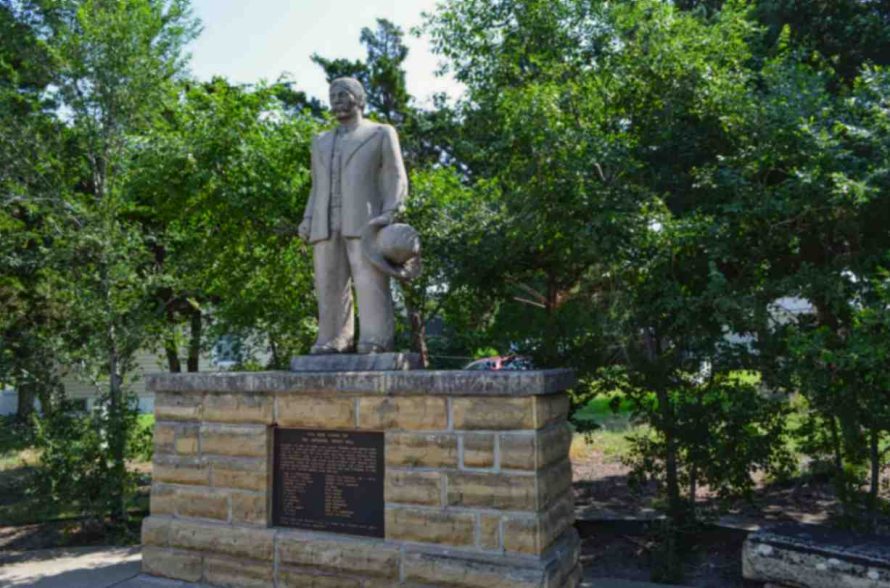
Discovering a Kansas Sculpting Icon
I always enjoy meeting people when I travel. People tell the story of places and the history and culture of those places, like the day I met Ray in a small Texas town.
I had the opportunity to visit Hays Kansas in June 2025, one of the towns on the Gunsmoke trail, where some of the most interesting history of the old west took place. What I wasn’t expecting was meeting a quiet man who has been turning limestone blocks into sculptures for over 60 years.
Born in 1933, this self-taught sculptor turned local limestone into timeless masterpieces, crafting a legacy that draws visitors seeking the best limestone sculptures in Kansas. Today, let’s dive into the life, works, and studio of Pete Felten, whose story is as rugged as the stone he carves.

The Life and Legacy of Kansas Sculptor Pete Felten
If you’ve ever driven through Hays, Kansas and spotted towering limestone sculptures rising from the prairie, you’ve already crossed paths with a quiet legend: Pete Felten, one of America’s most unique and regionally rooted sculptors. Known for transforming Kansas limestone into monumental figures, Felten’s life and work offer a story as enduring as the stone he carves.
Hotels in Hays Kansas
This post explores the remarkable biography of Pete Felten, his studio in Hays, famous public sculptures in Kansas, and the significance of his legacy. If you’re looking for things to see in Hays Kansas, or want to explore hidden roadside art in Kansas, Felten’s work deserves a prominent place on your list.
Early Life and the Spark of Inspiration

Pete Felten Jr., affectionately called “Fritz” by some, entered the world in Hays, Kansas, a town nestled in Ellis County, where art wasn’t a family trade but a distant dream. Growing up, he excelled in track and swimming at Hays High School, spending a year at Fort Hays State College before the call of adventure pulled him away. In 1952, at 19, he enlisted in the U.S. Navy, serving until 1956, a stint that shaped his future. Sailing the coasts from the East to West, touching Hawaii, he wandered into art museums in St. Louis, New York, Boston, and Baltimore, where paintings and sculptures ignited a passion he couldn’t ignore. This exposure, often overlooked in tales of Hays Kansas art tour origins, planted the seed for a career that would redefine Kansas art.
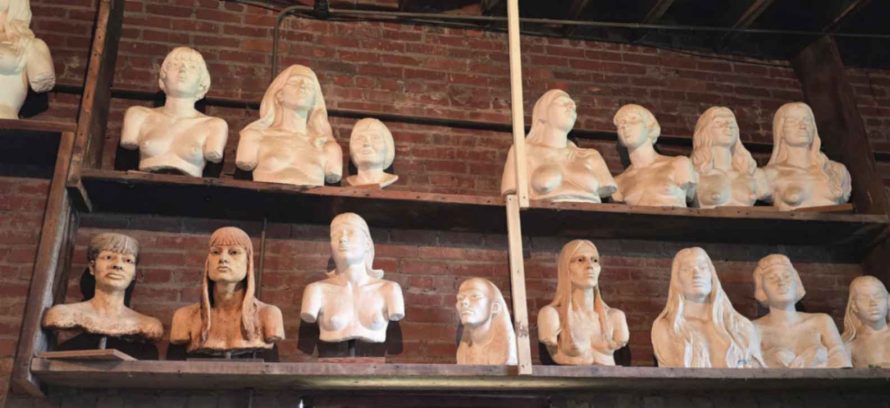
Returning to Hays, Pete didn’t settle into the family business, Felten Truck Line. Instead, in 1957, he went back to college where he met John Berland, a limestone carver, and began his journey. With no formal training, he taught himself, wielding a chisel on Kansas limestone—quarried from fence posts—appreciating its fossils and hues like chestnut shell and tuxedo gray. His early experiments, though rough, reflected a determination that questions the myth that art requires a prestigious start, making him a beacon for Kansas self-taught artists.
While many of his peers gravitated toward bronze and other traditional media, Felten was drawn to something closer to home: limestone.
Kansas Limestone: The Medium That Defined His Style
Felten’s choice of Kansas limestone sculpture set him apart from other American artists. Limestone, abundant in central Kansas counties like Ellis and Russell, was both durable and deeply connected to the local landscape.
Felten admired its texture and character. Fossils embedded in the stone told prehistoric stories. Iron streaks and porous gaps added complexity. Rather than polishing it into sleek, high-modernist forms, Felten allowed the stone to speak for itself. His style—bold, simple, monumental—felt honest. And in its honesty, it became timeless.
Working primarily with hand tools, Felten carved many of his sculptures on-site, often outdoors at his Hays studio. His work was not only artistic—it was deeply regional. Each sculpture reflected the people, history, wildlife, and mythology of the Midwest.
The Stone Gallery: A Kansas Art Studio Unlike Any Other

Felten established his workspace, The Stone Gallery, in the 1970s at 107 ½ W. 6th St. Unlike formal museums, the Stone Gallery is open-air, informal, and full of surprises. Giant animal sculptures and mythological figures scatter the sculpture garden. Inside, busts of Kansas pioneers, priests, and Native American figures line the walls.
Visitors often describe The Stone Gallery as one of the most unique art experiences in Kansas. There are no ticket booths, no gift shops. Just stone, stories, and the occasional chance to meet Pete himself—chiseling away into his 90s.
If you’re planning a road trip through Kansas, the Stone Gallery is a must-see destination for Midwest roadside attractions.
Signature Works: Where to Find Pete Felten’s Sculptures in Kansas
Felten’s sculptures are scattered across Kansas, especially in Hays and surrounding counties. Here are some of his most iconic works:
Famous Works That Define a Legacy

Pete Felten’s sculptures stand as landmarks, each telling a story of Kansas history. The Monarch of the Plains, completed in 1967 for Hays’ centennial, is an eight-foot-high, ten-foot-long buffalo carved from a massive block over two years. Located at Fort Hays State Historic Site, 1472 Highway 183 Bypass, it’s open 10 a.m. to 4 p.m. Wednesday – Sunday, a must-see on any Pete Felten sculpture locations list. Then there’s the Four Famous Kansans, unveiled in 1981 in the Kansas State Capitol rotunda in Topeka, featuring Amelia Earhart, Dwight D. Eisenhower, Arthur Capper, and William Allen White. Crafted from limestone over two years and transported 200 miles down Interstate 70, this $60,000 project funded his studio upgrade.
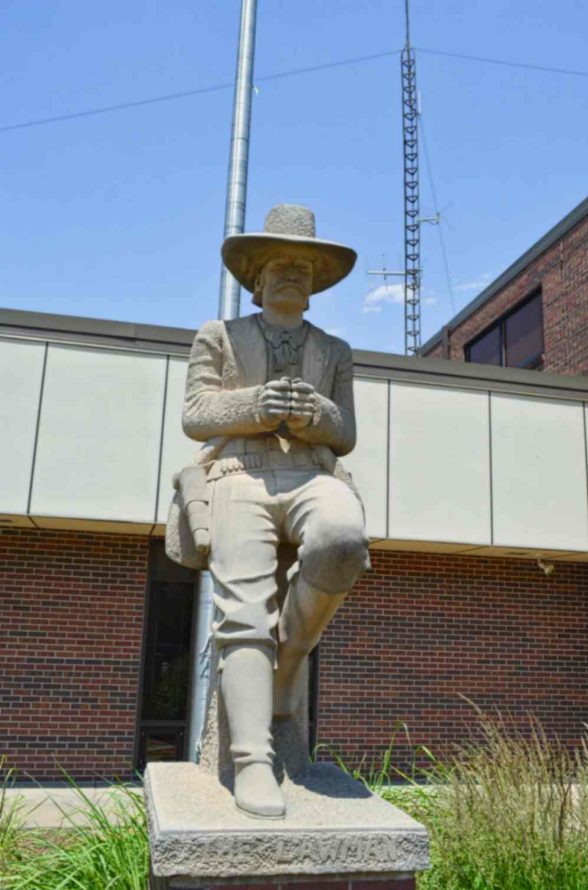
In Hays, the Pteranodon along Interstate 70 catches the eye, while the Lawman outside City Hall and the Boot Hill Man at the Ellis County Historical Society (finished 1971) honor the Old West. Felten’s depiction of the lawman isn’t romanticized. Instead, it presents a lean, worn figure—watchful and hardened. Located on Main Street, it’s become one of the most photographed spots in downtown Hays.

Other works, like the Street Singer (1980) at Seventh and Main, showcase his versatility, using stones from Vermont Blue Marble to Texas Limestone. The nearby town of Victoria have Capuchin Franciscan Friar at the Basilica of St. Fidelis, and Volga German Family at 10th & Cathedral.

These pieces, numbering over 20 in Hays alone, are detailed on VisitHays.com’s Hays Kansas art tour, drawing visitors year-round. Critics note his Old West focus, but his use of diverse stones counters that, cementing his status among unique Kansas artists 2025.
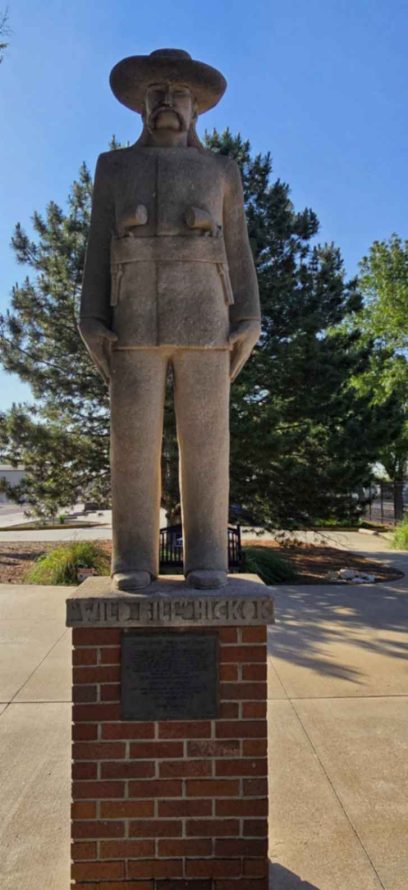
Style and Technique: Carving with Purpose

Felten’s sculptures have a signature presence. They’re not hyper-realistic, but they are deeply expressive. He often said the stone already had the form inside—he simply needed to let it out.

Working with limestone demanded a different skill set than bronze or clay. Felten used chisels, hammers, and measuring calipers, and many of his largest works were shaped entirely by hand.
Critics and historians have described his style as part of the Midwestern Folk Art movement—defined by its honest materials, regional focus, and deep community roots. Others have compared him to modern primitive artists, but always with a unique Kansas signature.
Awards, Recognition, and Legacy

In 2007, Felten received the Governor’s Arts Award from the Kansas Arts Commission, recognizing his lifetime achievement. But Felten was never one to seek the spotlight. He remained rooted in Hays, carving from limestone and letting the community interact directly with his art.
His work now lives in universities, parks, churches, museums, and town squares across the state. It’s part of the daily lives of Kansans. Children climb on it. Locals take prom and wedding photos next to it. Tourists stumble upon it and leave changed.
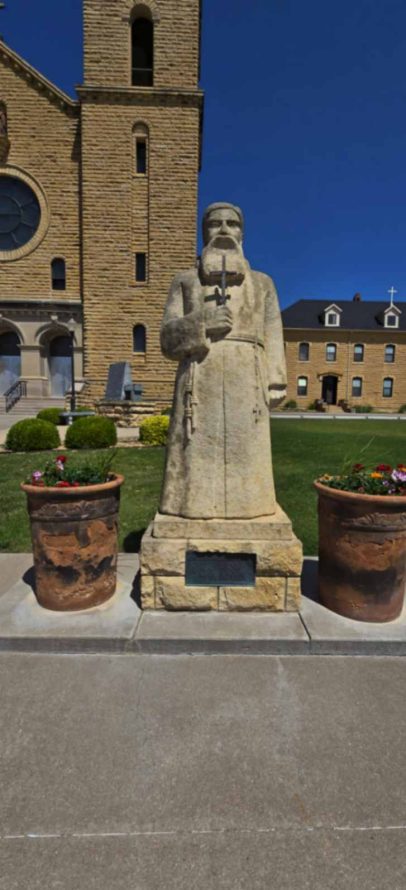
In a world of digital media and fleeting attention spans, Pete Felten’s work is permanent public art—quiet, accessible, and carved with care.
Why Pete Felten Matters
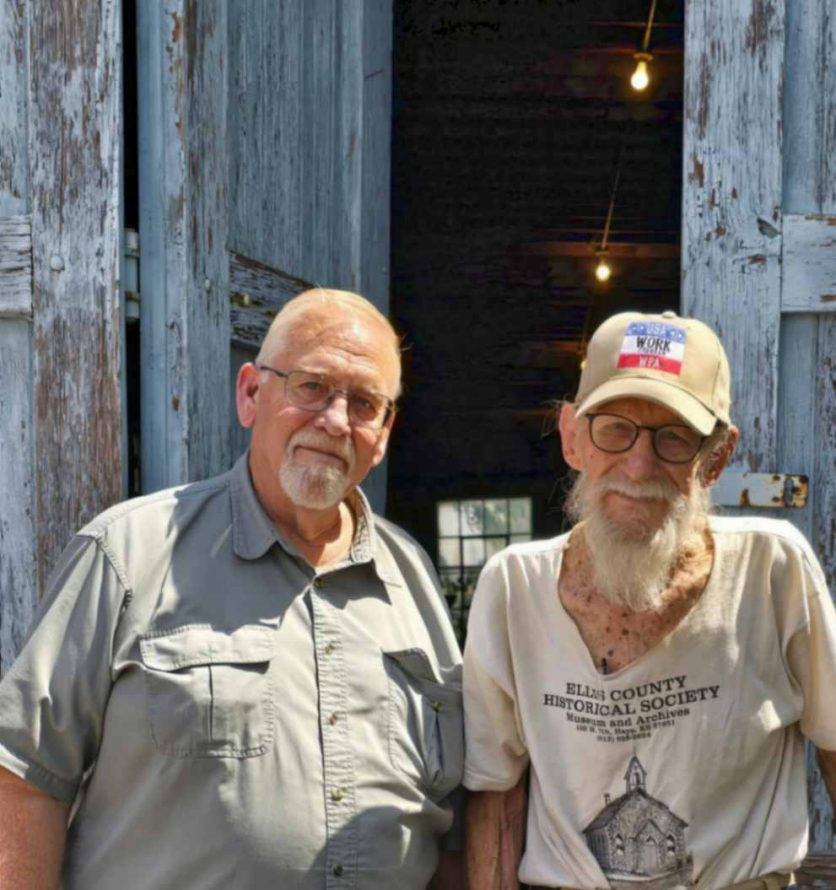
Felten’s story is a testament to the power of place-based art. He didn’t move to New York or Los Angeles. He didn’t chase gallery fame or ride trends. Instead, he built something lasting—something rooted in limestone and layered in community memory.
His life is a reminder that true art doesn’t need to shout. Sometimes it just needs a chisel, a hammer, and a little Kansas wind.
Planning Your Visit to See Pete Felten’s Work
If you’re planning a visit to western Kansas, here’s how to experience Pete Felten’s work firsthand:
Best Places to See Pete Felten’s Art:
- The Stone Gallery – 107 ½ W. 6th St, Hays KS
- Fort Hays State University – Hays, KS
- Downtown Hays – Main Street
- Frontier Park & Historic Fort Hays – Hays, KS
Final Thoughts
Pete Felten’s art is carved not just from stone—but from the very soul of the prairie. His legacy lives in limestone, in laughter, in quiet moments of awe beside a sculpture taller than a pickup truck.
So if you ever find yourself rolling through the Flint Hills or wheat fields of western Kansas, make the stop in Hays. Walk the gravel path of the Stone Gallery. Stand beneath the stone gaze of the pioneer woman. Listen to the wind. And know that here, art lives in silence—and stays there.


Leave a Reply